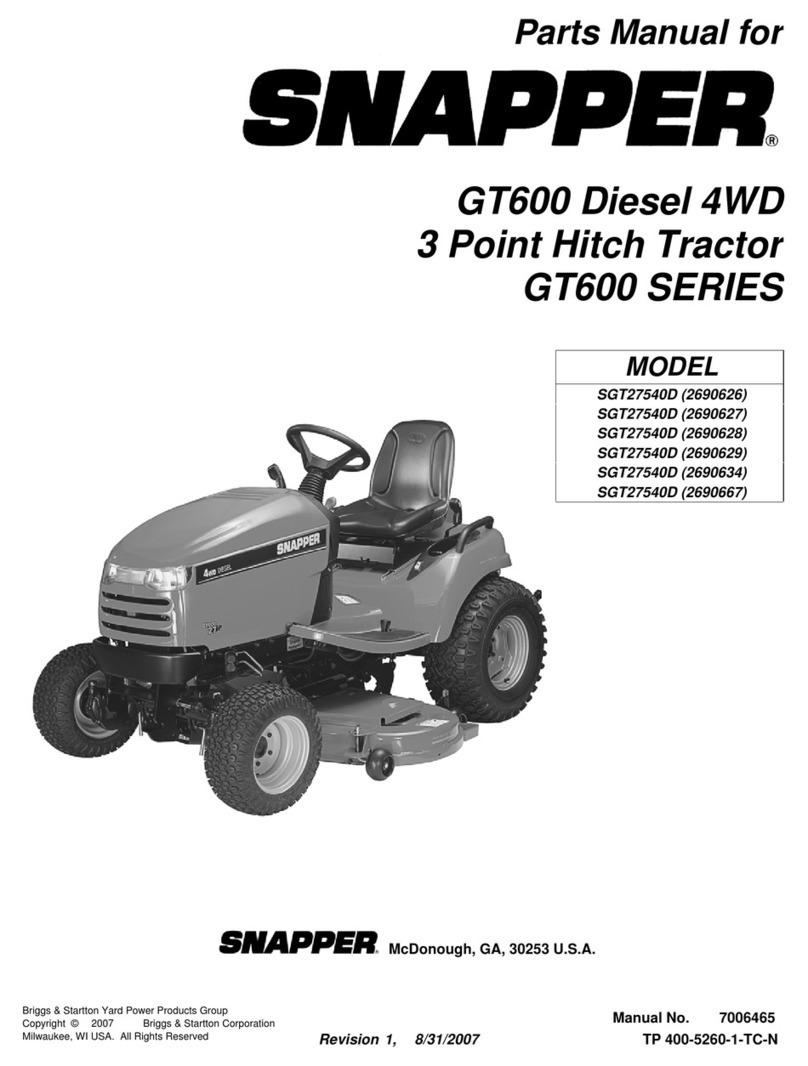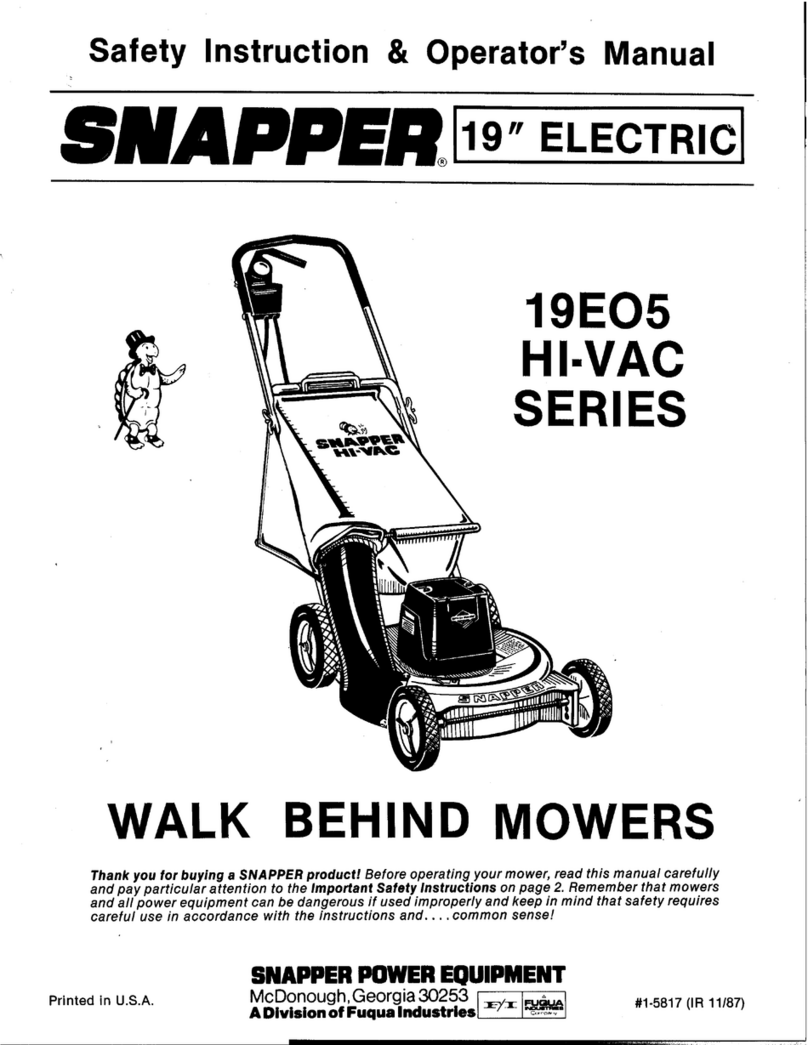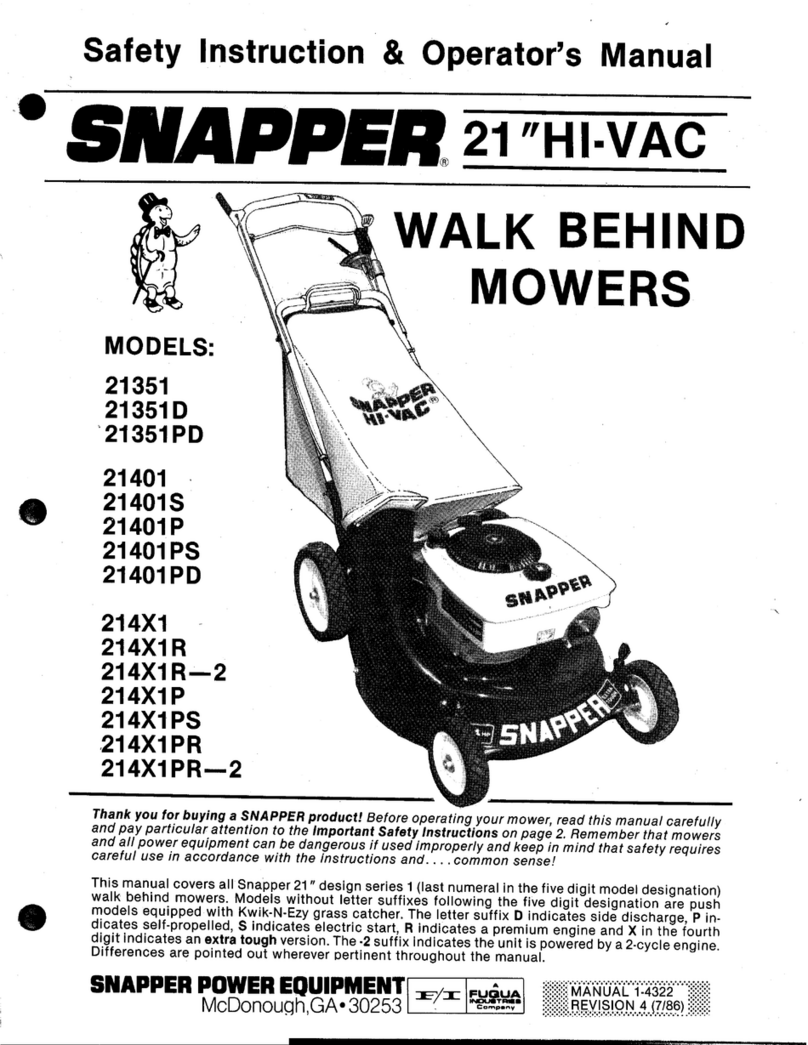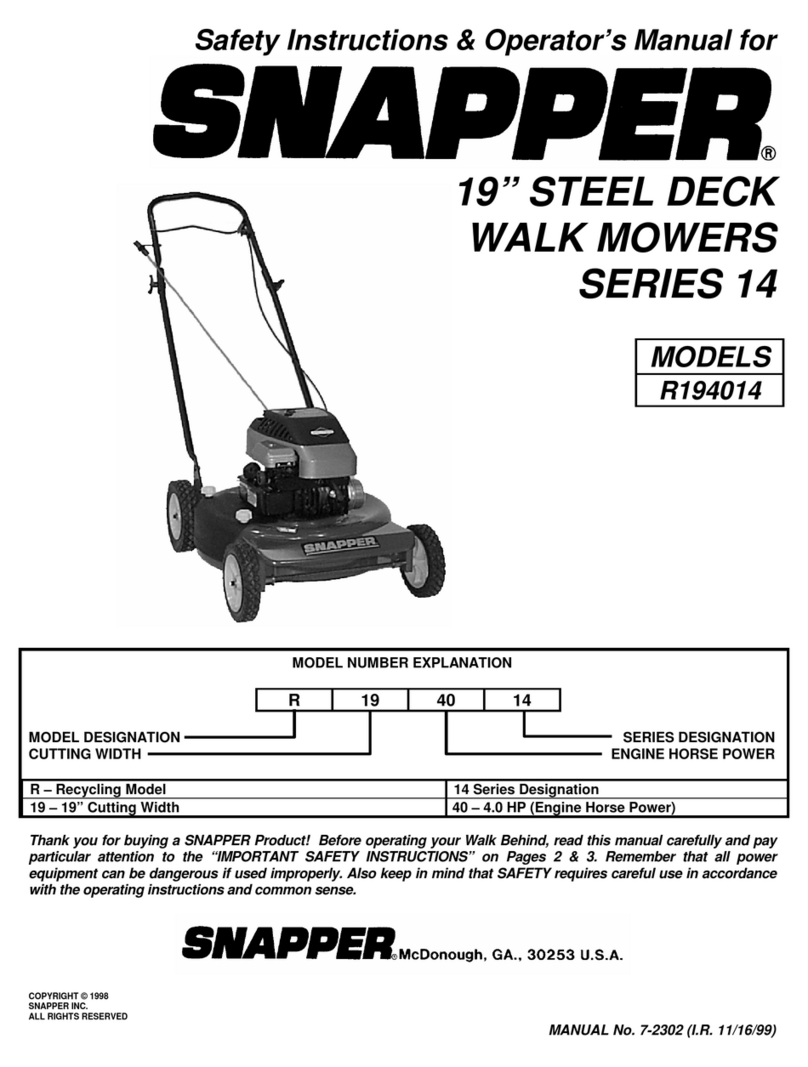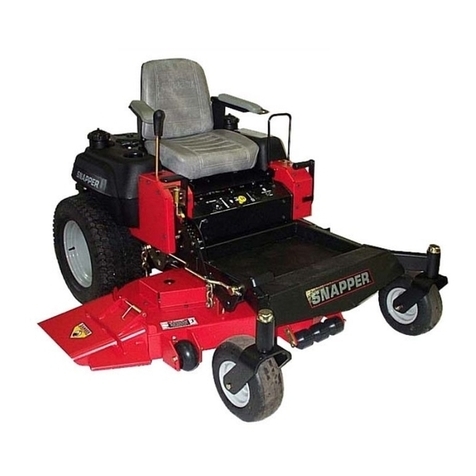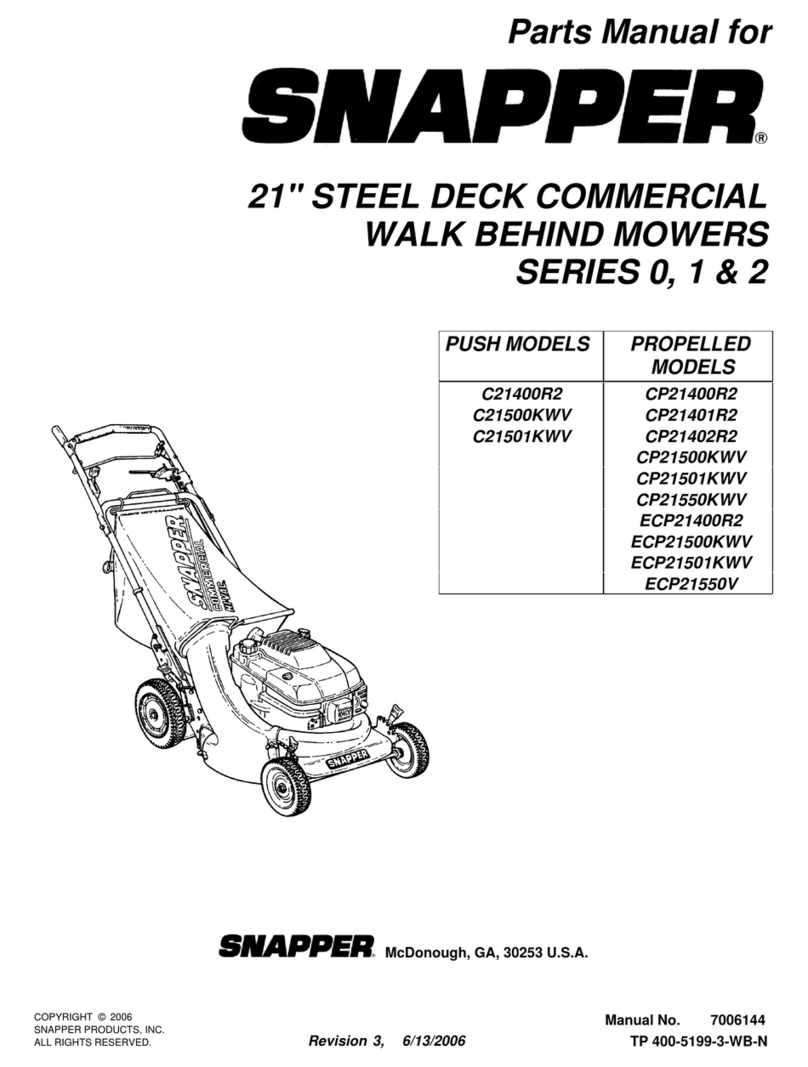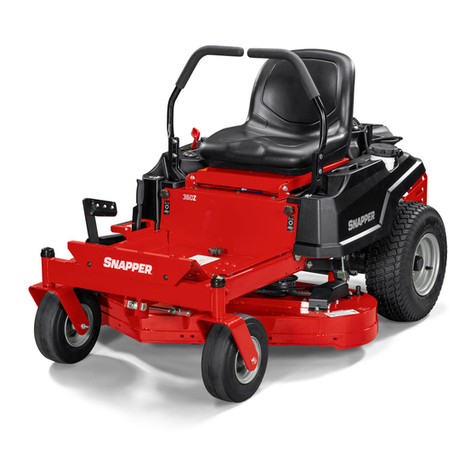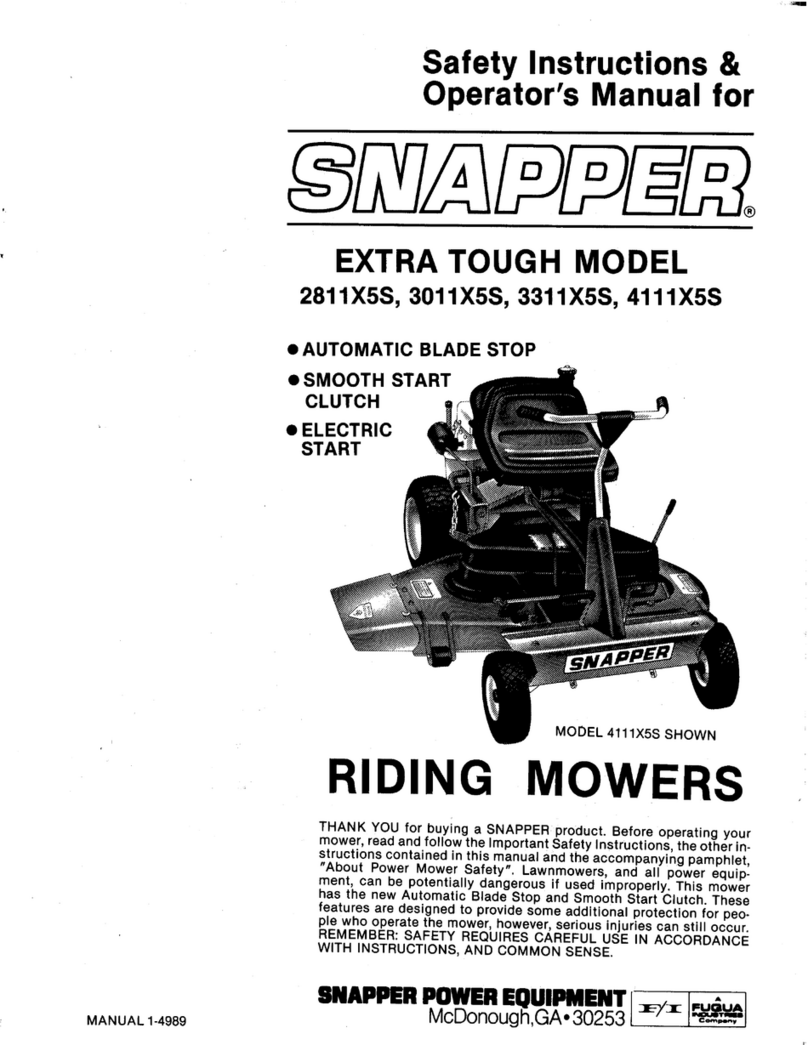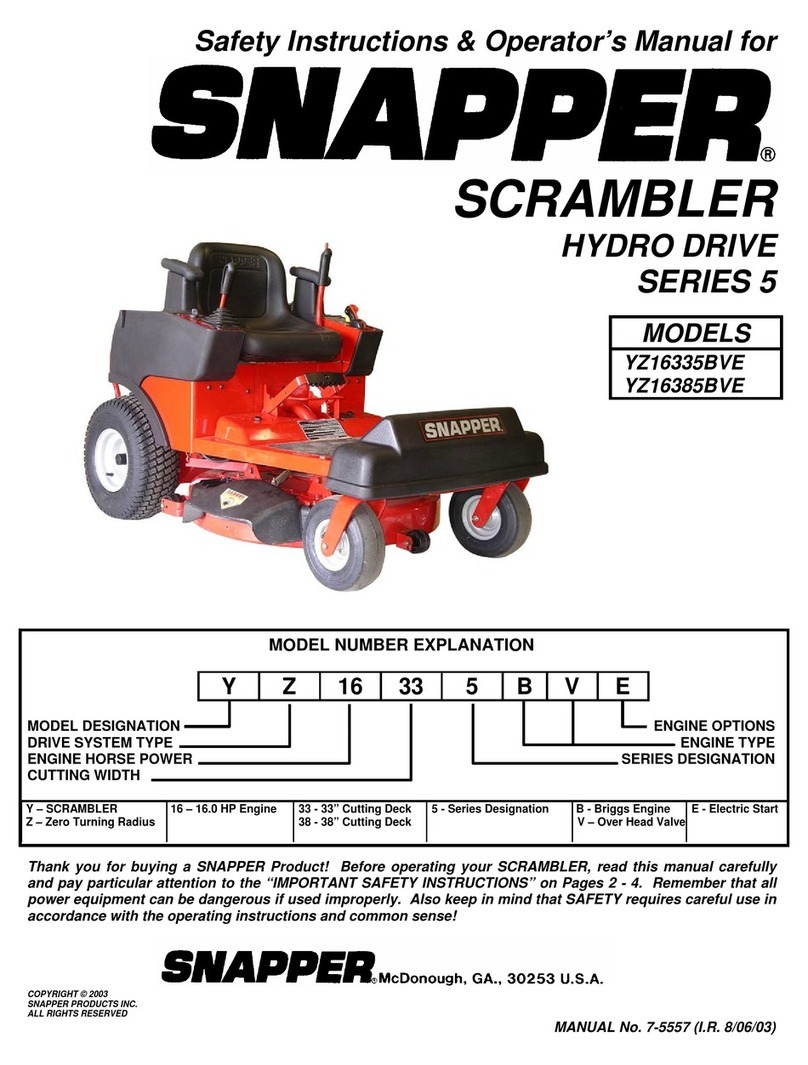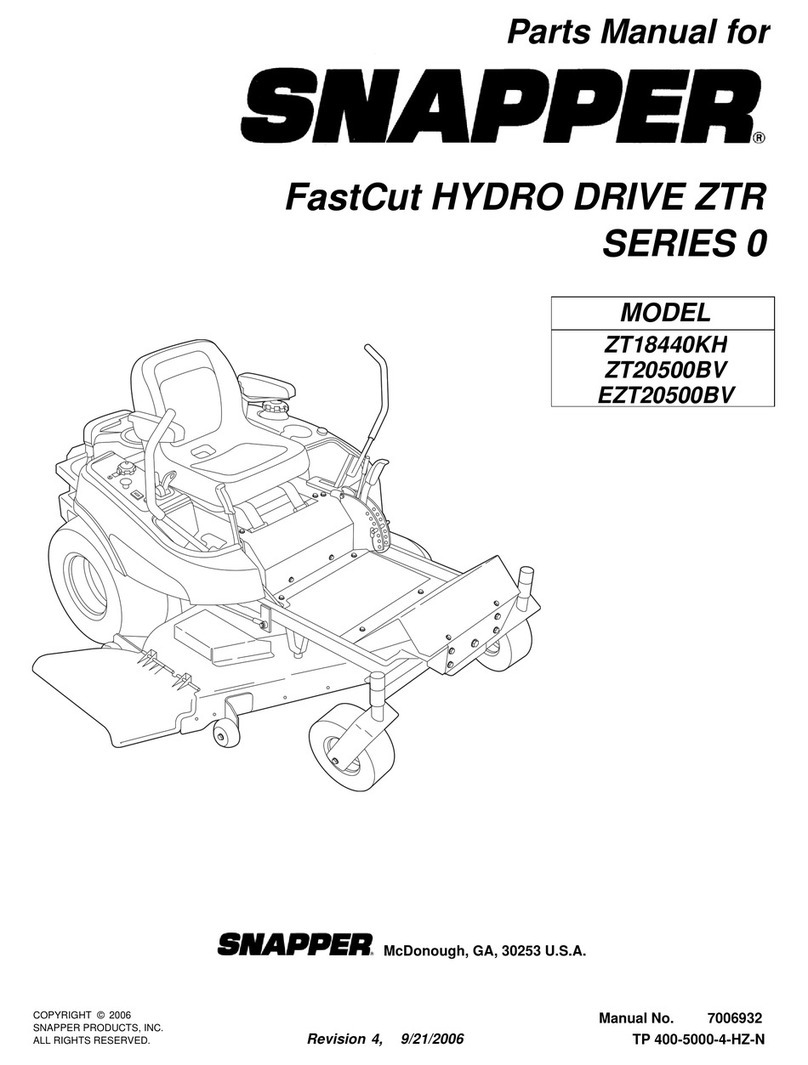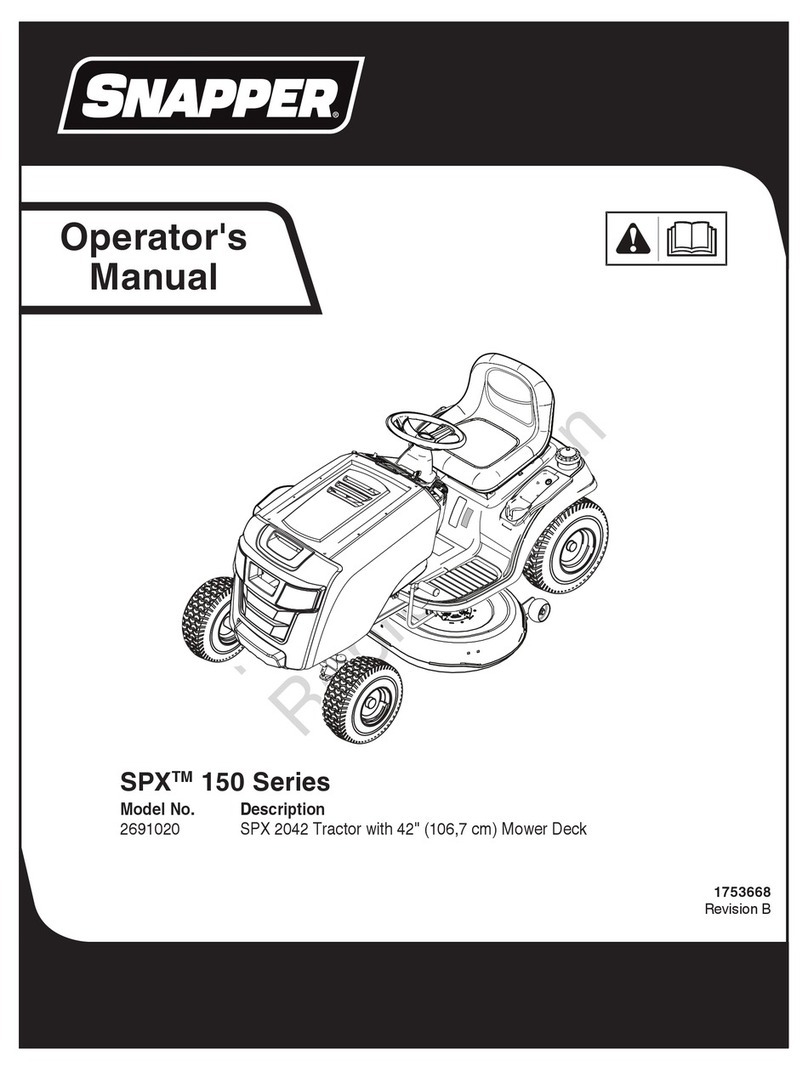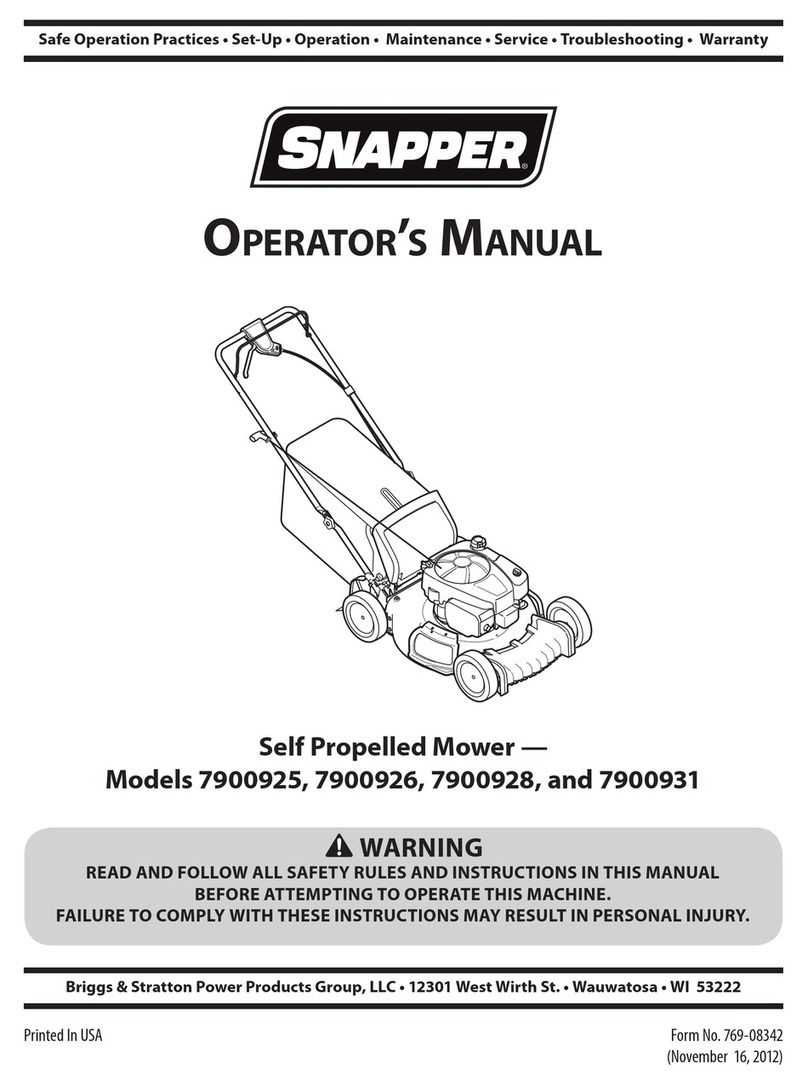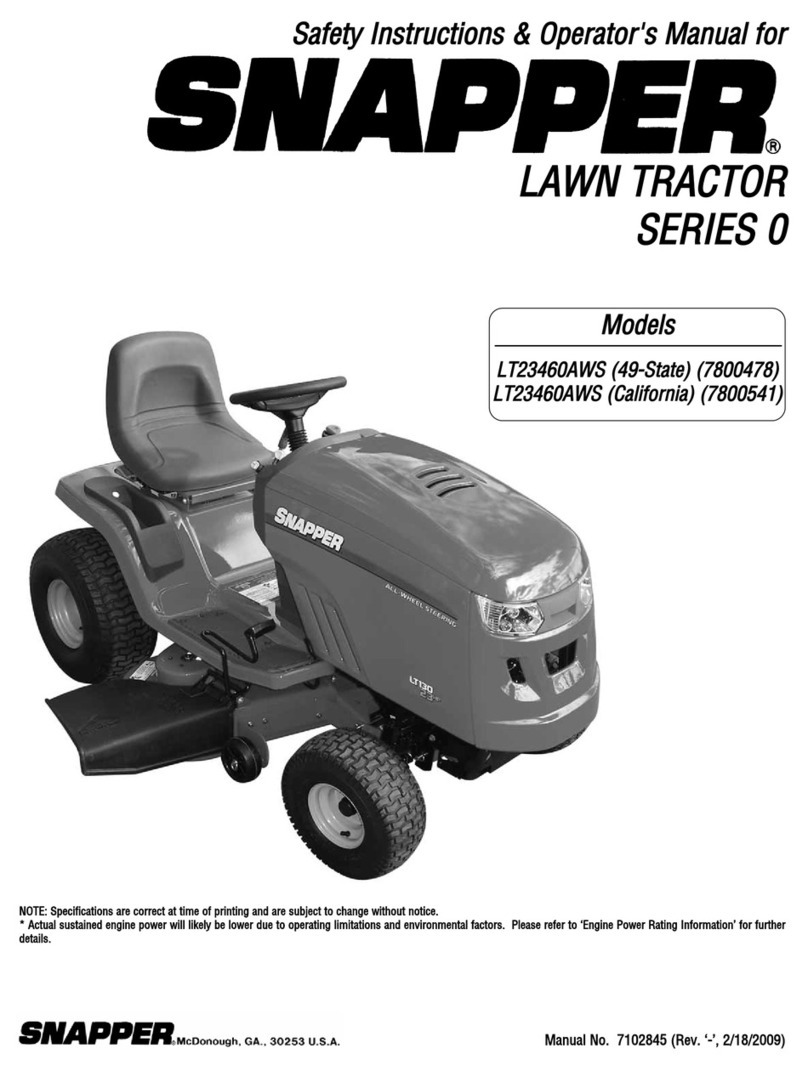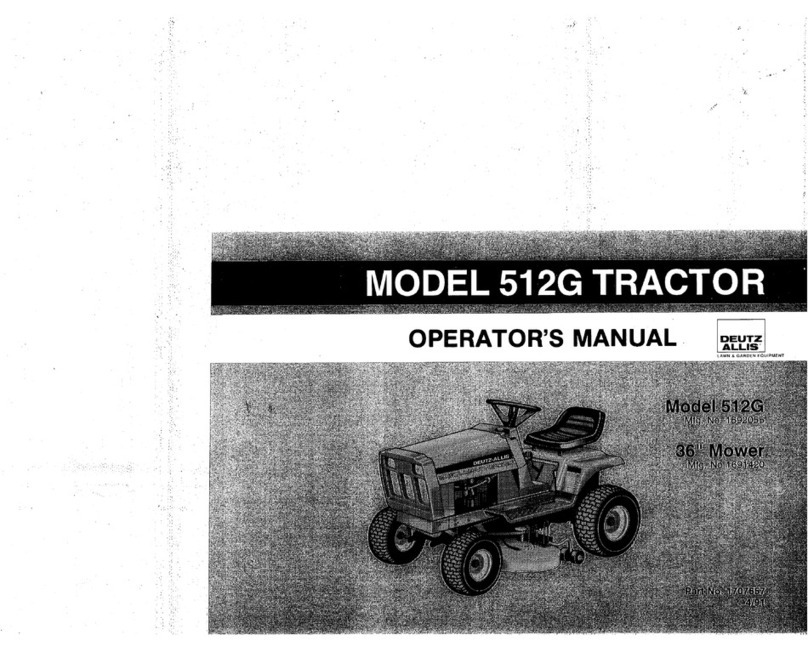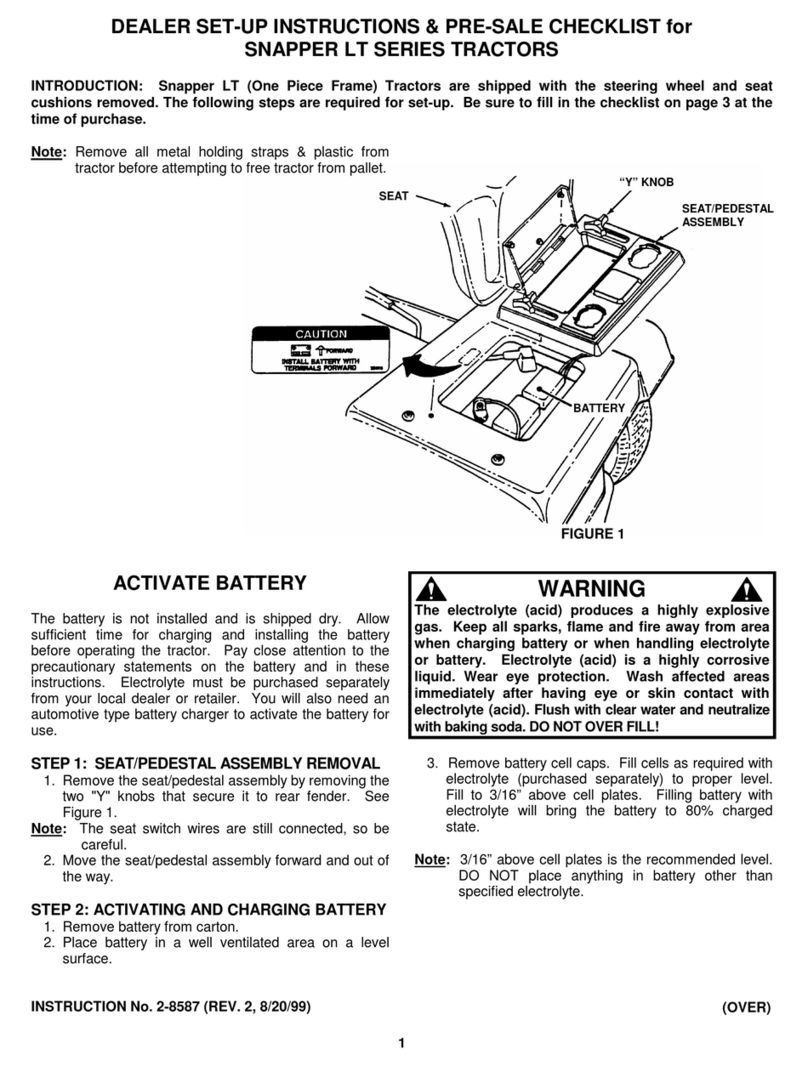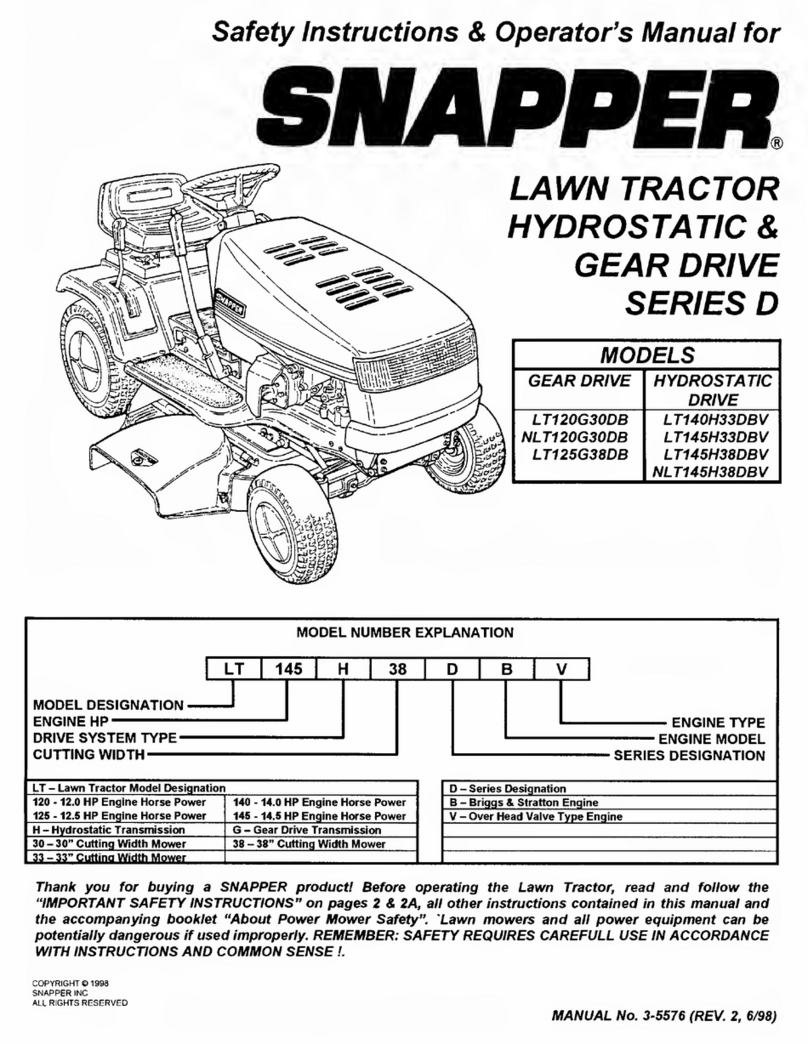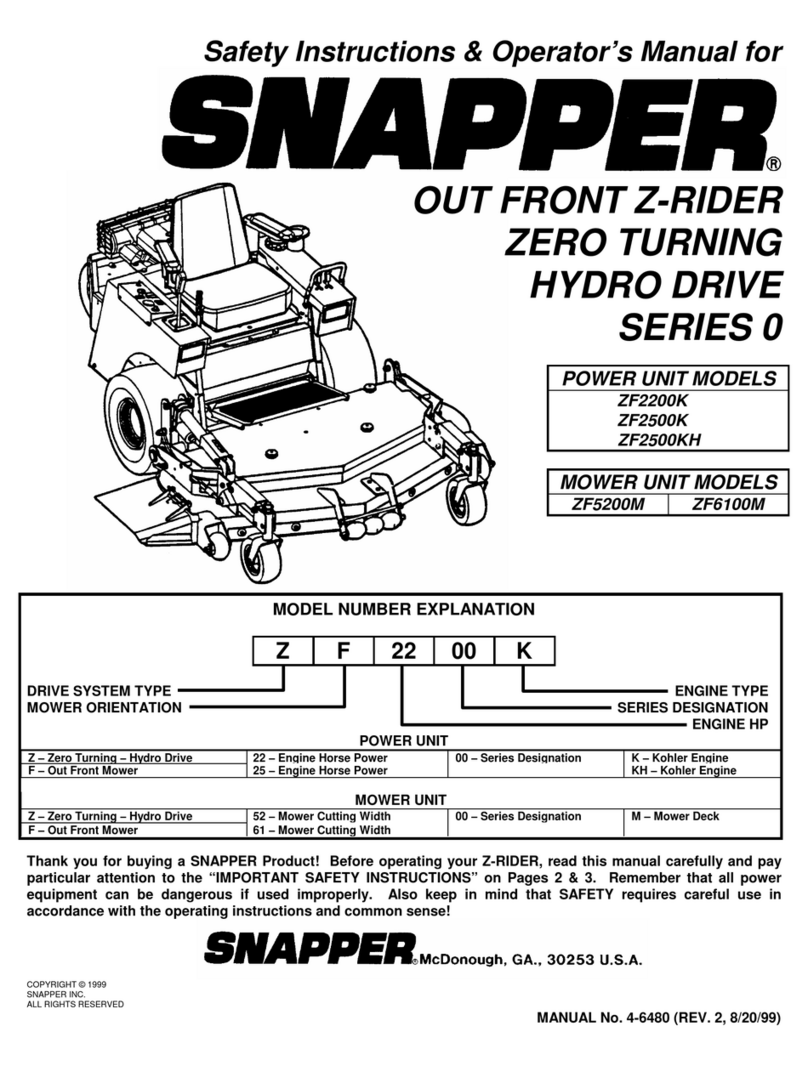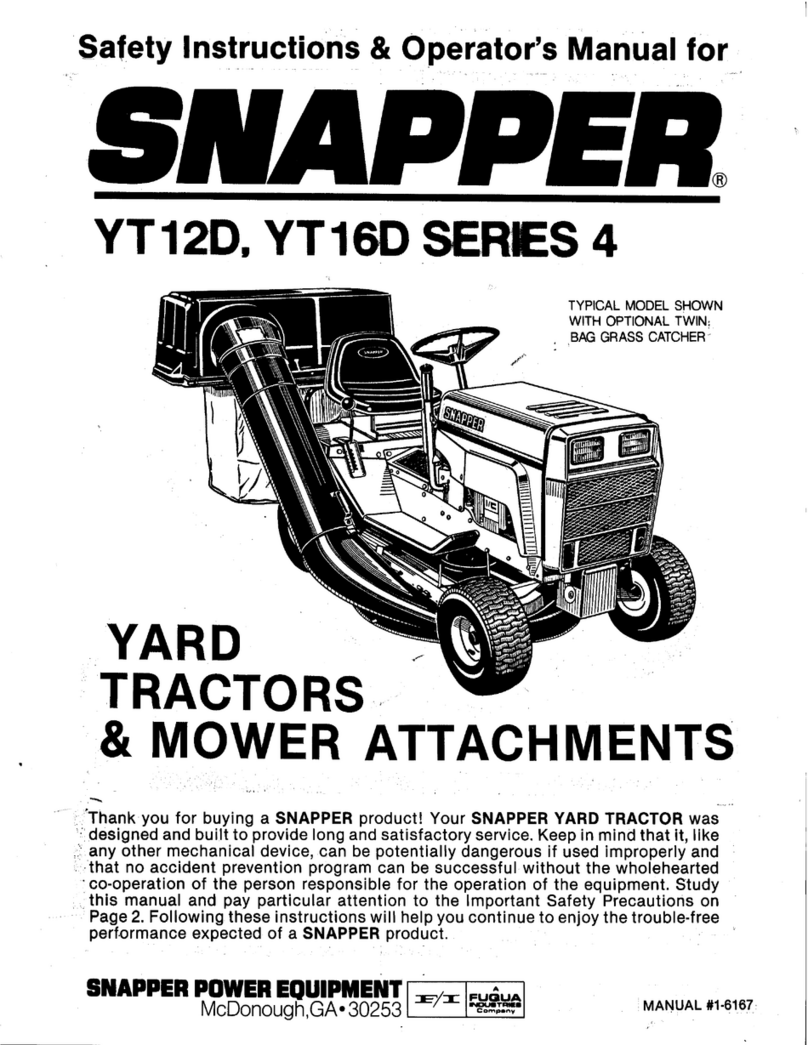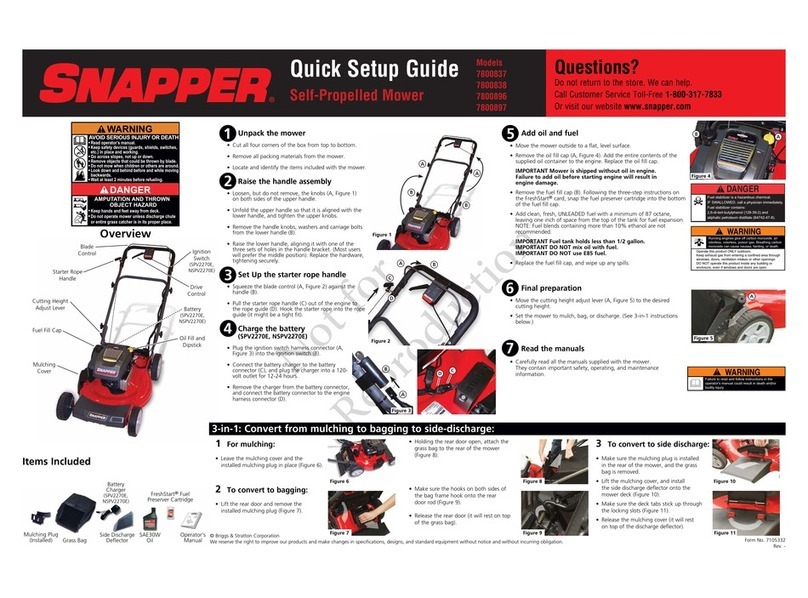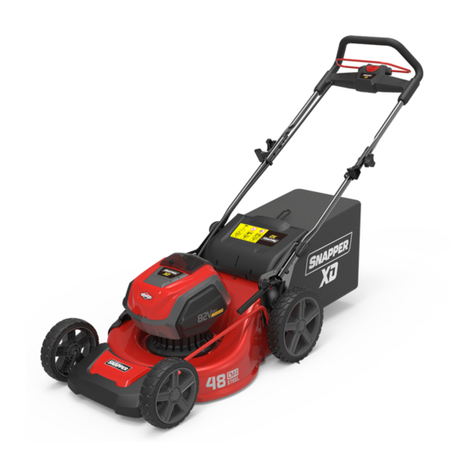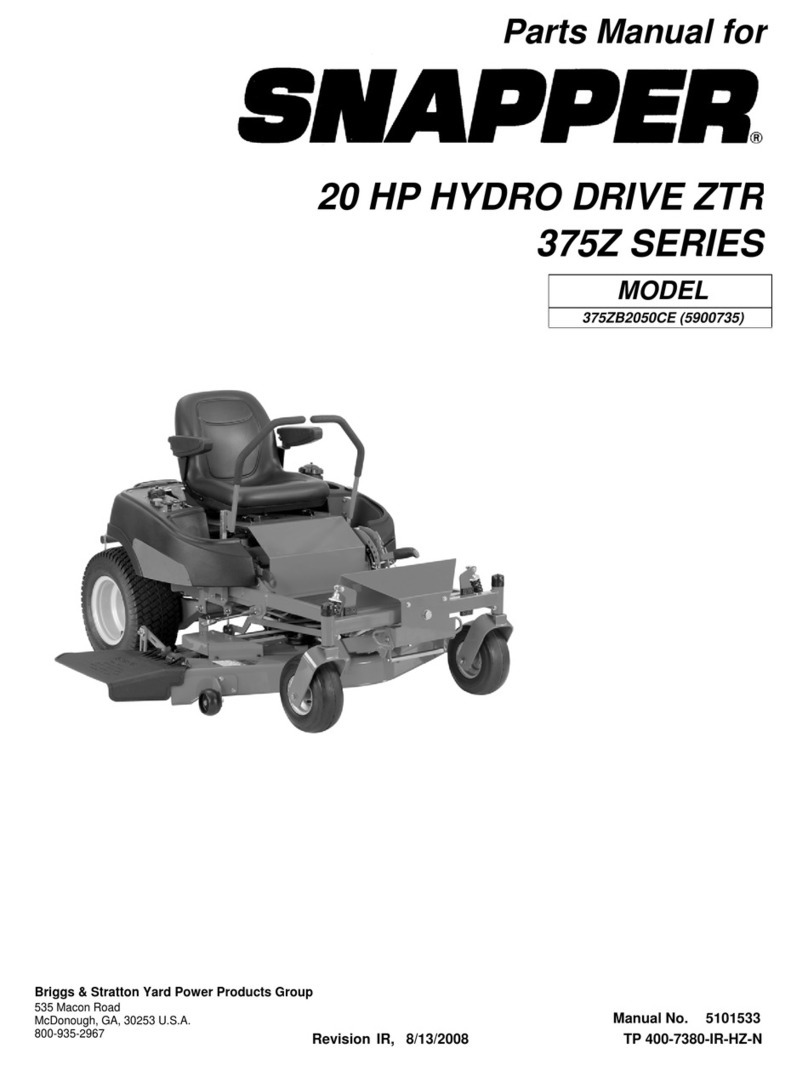
SafetyRules& Iflformtiofl
SERVICEAND MAINTENANCE
Toavoid personal injuryor property damaqe, use extreme
care in handling gasoline. Gasolineis extremely flammable
and thevaporsare explosive.
Safe Handling ofGasoline
1. Extinguishall cigarettes,cigars, pipes, and other
sources of ignition.
2. Useonly approvedgasolinecontainers.
3. Neverremove the gas cap or add fuel with the engine
running. Allow the engineto cool beforerefueling.
4. Neverfuel the machine indoors.
5. Neverstore the machine or fuel container where there is
an open flame, spark, or pilot light such as near a water
heateror other appliance.
6. Neverfill containers insidea vehicle or on a truck bed
with a plastic bed liner. Always placecontainers on the
ground away from your vehicle beforefilling.
7. Removegas-powered equipment from the truck or
trailer and refuelit on the ground. If this is not possible.
then refuelsuch equipment on a trailer with a portable
container, ratherthan from a gasoline dispenser nozzle.
8. Keepnozzlein contact with the rim of the fuel tank or
container opening at all times until fueling is complete.
Do not use a nozzlelock-open device.
9. If fuel is spilled on clothing, changeclothing
immediately.
10. Neverover-fill the fuel tank. Replacegas capand
tighten securely.
11. Useextra care in handling gasoline and other fuels. They
are flammable and vapors are explosive.
12. If fuel is spilled, do not attempt to start the engine but
move the machine awayfrom the area of spillage and
avoid creating anysource of ignition until fuel vapors
havedissipated.
13. Replaceall fuel tank capsand fuel container caps
securely.
Maintenance and Storage
1. Always observe safe refueling and fuel handling
practices when refuelingthe unit after transportation or
storage.
2. Always follow the engine manualinstructions for storage
preparations beforestoring the unit for both short and
long term periods.
3. Always follow the engine manualinstructions for proper
start-up procedureswhen returning the unitto service.
4. Neverstore the machine or fuel container insidewhere
there is an openflame, such as in awater heater. Allow
unit to cool beforestoring.
5. Shut off fuel while storing or transporting. Donot store
fuel near flames or drain indoors.
6. Keepall hardware,especiallyblade attachment bolts.
tight and keepall parts in good working condition.
Replaceall worn or damageddecals.
7. Nevertamper with safety devices. Checktheir proper
operation regularly.
8. Disengagedrives, lower implement, set parking brake,
stop engineand remove key or disconnect spark plug
wire. Wait for all movement to stop before adjusting,
cleaning or repairing.
9. Cleangrass and debris from cutting units, drives,
mufflers, and engineto prevent fires. Cleanup oil or
fuel spillage.
10. Let enginecool before storing and do not store near
flame.
11. Stop and inspect the equipment if you strike an object.
Repair,if necessary,before restarting.
12. Park machine on levelground. Neverallow untrained
personnelto service machine.
13. Usejack stands to support components when required.
14. Carefully releasepressure from components with stored
energy.
15. Disconnect batteryor removespark plug wire before
making any repairs. Disconnectthe negativeterminal
first and the positive last. Reconnectpositive first and
negativelast.
16. Usecare whenchecking blades. Wrapthe blade(s) or
wear gloves, and use caution when servicing them.
Onlyreplaceblades. Neverstraighten or weld them.
17. Keephandsand feet awayfrom moving parts. If
possible, do not makeadjustments with the engine
running.
18. Chargebatteries in an open well ventilated area, away
from spark andflames. Unplug charger before
connecting or disconnecting from battery. Wear
protective clothes and useinsulated tools.
19. Grasscatcher components are subject to wear,damage,
and deterioration, which could expose moving parts or
allow objectsto bethrown. Frequentlycheck
components and replacewith manufacturer's
recommendedparts, when necessary.
20. Checkbrake operationfrequently. Adjust and service as
required.
21. Useonly factory authorized replacementparts when
making repairs.
22. Always comply with factory specifications on all settings
and adjustments.
23. Only authorizedservice locations should be utilized for
major service and repair requirements.
24. Neverattempt to makemajor repairs on this unit unless
you have been properlytrained. Improper service
procedures can result in hazardous operation,
equipment damageand voiding of manufacturer's
warranty.
25. Unitswith hydraulic pumps, hoses,or motors:
WARNING:Hydraulic fluid escaping under pressure may
havesufficient force to penetrateskin and causeserious
injury. If foreign fluid is injected into the skin it must be
surgically removed within a few hours bya doctor
familiar with this form of injury or gangrenemay result.
Keepbody and hands awayfrom pin holes or nozzles
that eject hydraulic fluid under high pressure. Use paper
or cardboard, and not hands,to search for leaks. Make
sure all hydraulic fluid connections are tight and all
hydraulic hosesand lines are in good condition before
applying pressureto the system. If leaks occur, have
the unit serviced immediately byyour authorized dealer.
26. WARNING:Storedenergy device. Improper releaseof
springs can result in serious personal injury. Springs
should be removed by an authorizedtechnician.
